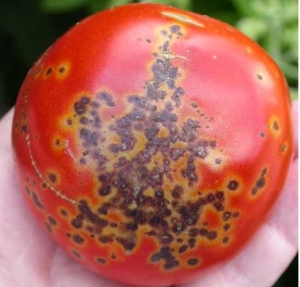Prelecionista: Prof. Jeffrey B. Jones. University of Florida, Department of Plant Pathology. (08/04/2018, às 16:00 horas). Bacterial spot disease of pepper and tomato is caused by four distinct Xanthomonas species (X. euvesicatoria, X. gardneri, X. perforans, and X. vesicatoria) and causes significant defoliation and yield losses in both crops. In Florida, X. euvesicatoria was the major bacterial spot pathogen on tomato until the early 1990s when X. perforans was first observed. X. perforans, which contains several bacteriocins inhibitory to X. euvesicatoria, quickly became the dominant species on tomato. By 2006, only X. perforans was found on tomato in Florida. Prior to 2010, X. perforans was only known to infect tomato. In that year, X. perforans strain Xp2010 was isolated from pepper. Using multilocus and whole genome sequence analyses on a subset of X. perforans strains collected in 2006 and more recently, two distinct groups (i.e., groups 1 and 2) of X. perforans strains were identified. Xp2010 was determined to be a member of group 2. We hypothesized that group 2 strains were more aggressive on pepper than group 1 strains. Following infiltration of bacterial suspensions of group 1 and group 2 strains into pepper leaves and quantification of bacterial populations, we determined that group 2 strains reached significantly higher bacterial populations than group 1 strains. Thus, we observed host-range expansion of X. perforans to pepper by group 2 strains. Interestingly, the Group 2 strains lack active bacteriocins and may have emerged from populations that underwent recombination with X. euvesicatoria, a known pathogen of pepper.

